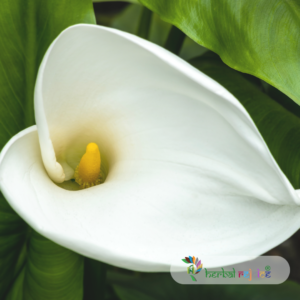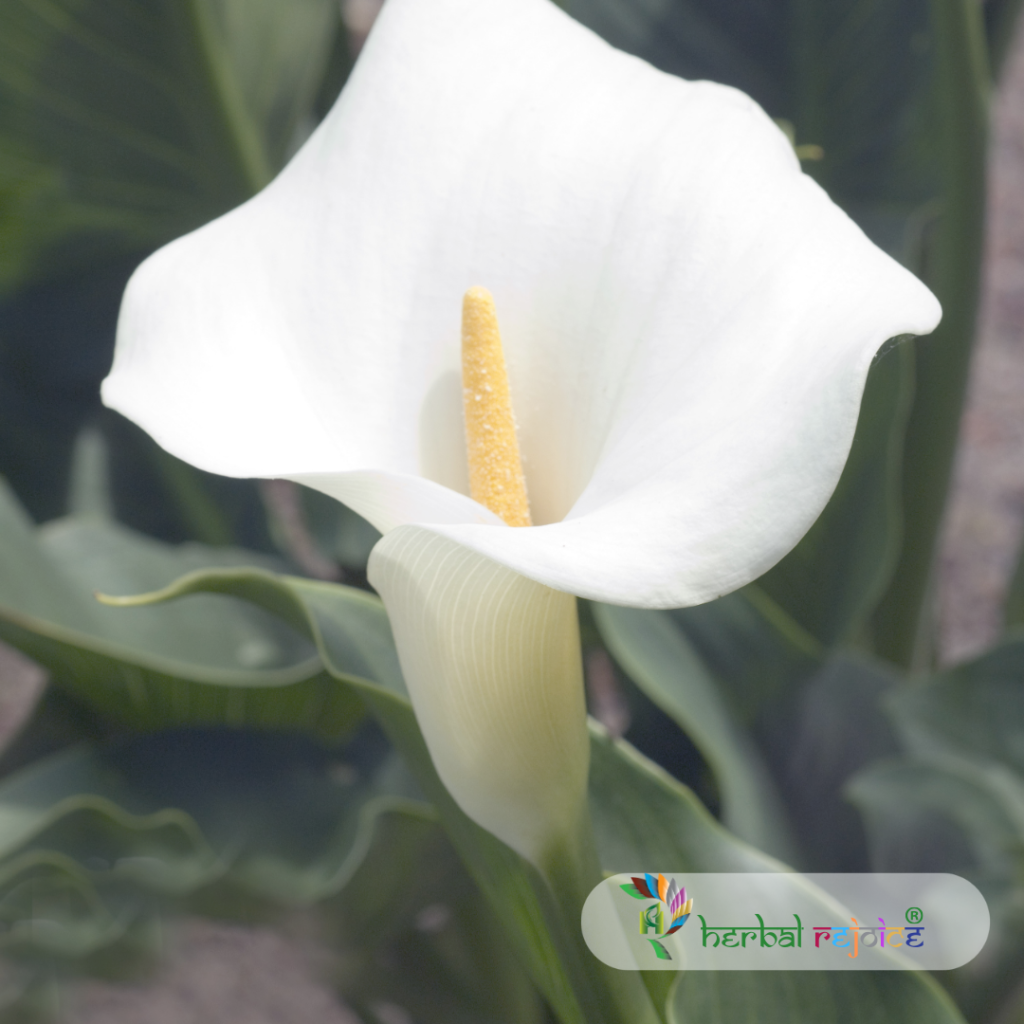Introduction
Zantedeschia aethiopica (L.) Spreng., also known as Richardia africana Kunth, belongs to the Araceae family. This plant is commonly found in the cooler regions of Bihar and Orissa. Its leaves have been traditionally used as a poultice for various ailments such as sores, boils, wounds, burns, insect bites, gout, and rheumatism.
Medicinal Properties
The leaves of Zantedeschia aethiopica contain an acrid juice that possesses poisonous and irritant properties. This irritation is primarily caused by the presence of raphides, specifically calcium oxalate. Additionally, a toxic compound has been identified in the inflorescence, spathe, and flower stem of the plant. Studies on rabbits have shown a range of effects, from hypoesthesia to paralysis, upon exposure to this toxic principle.
Chemical Constituents
The flowers of Zantedeschia aethiopica contain several bioactive compounds, including cytokinin, swertisin, swertiajaponin, cyanidin, peonidin, and ferulic acid. These compounds contribute to the medicinal properties of the plant.

It is worth noting that the toxicity of Zantedeschia aethiopica leaves can be reduced through roasting or boiling. These cooking methods appear to destroy the toxic properties of the leaves, making them safer for consumption or external application.
Conclusion
In conclusion, Zantedeschia aethiopica (L.) Spreng., also known as Richardia africana Kunth, is a plant commonly found in the cooler parts of Bihar and Orissa. Its leaves are traditionally used as a poultice for various ailments. However, caution should be exercised due to the presence of a poisonous and irritant juice, containing raphides of calcium oxalate. On the other hand, the flowers of this plant contain several beneficial compounds. Proper cooking methods can mitigate the toxicity of the leaves, making them safer for use.
Frequently Asked Questions
What is the common name for Zantedeschia aethiopica?
It is also known as Richardia africana Kunth.
Where is Zantedeschia aethiopica commonly found?
It is found in the cooler regions of Bihar and Orissa in India.
What family does Zantedeschia aethiopica belong to?
It belongs to the Araceae family.
What are the traditional uses of Zantedeschia aethiopica leaves?
The leaves are traditionally used as a poultice for sores, boils, wounds, burns, insect bites, gout, and rheumatism.
What causes the irritation from Zantedeschia aethiopica leaves?
The irritation is caused by an acrid juice containing raphides of calcium oxalate.
What toxic compound is found in Zantedeschia aethiopica?
The plant contains a toxic compound in the inflorescence, spathe, and flower stem.
What are the effects of the toxic compound in Zantedeschia aethiopica?
Exposure can cause hypoesthesia and paralysis, as shown in studies on rabbits.
Which compounds are found in the flowers of Zantedeschia aethiopica?
The flowers contain cytokinin, swertisin, swertiajaponin, cyanidin, peonidin, and ferulic acid.
Are the leaves of Zantedeschia aethiopica poisonous?
Yes, the leaves contain a poisonous and irritant juice.
How can the toxicity of Zantedeschia aethiopica leaves be reduced?
The toxicity can be reduced through roasting or boiling the leaves.
What is the role of calcium oxalate in Zantedeschia aethiopica?
Calcium oxalate, in the form of raphides, is responsible for the plant’s irritant properties.
Can Zantedeschia aethiopica leaves be safely used after cooking?
Yes, proper cooking methods such as boiling or roasting can reduce the toxicity, making them safer for use.
What medicinal properties do the flowers of Zantedeschia aethiopica possess?
The flowers contain bioactive compounds that contribute to the plant’s medicinal properties.
Is Zantedeschia aethiopica used for external or internal applications?
Traditionally, the plant’s leaves are used externally as a poultice for various ailments.
What ailments can Zantedeschia aethiopica treat?
It can treat sores, boils, wounds, burns, insect bites, gout, and rheumatism.
What precautions should be taken when using Zantedeschia aethiopica?
Due to its toxic and irritant properties, it should be used with caution, and the leaves should be cooked to reduce toxicity.
What are raphides, and why are they important in Zantedeschia aethiopica?
Raphides are needle-like structures of calcium oxalate that cause irritation upon contact with the plant’s leaves.
Is Zantedeschia aethiopica safe for medicinal use?
While it has medicinal properties, it should be used carefully due to its toxicity, and under professional guidance.
Can the flowers of Zantedeschia aethiopica be used medicinally?
Yes, the flowers contain beneficial compounds like cytokinin and ferulic acid that contribute to its medicinal use.
What are the main benefits of Zantedeschia aethiopica?
It provides relief from a range of ailments, such as skin sores and rheumatism, but requires proper handling to mitigate toxicity.


